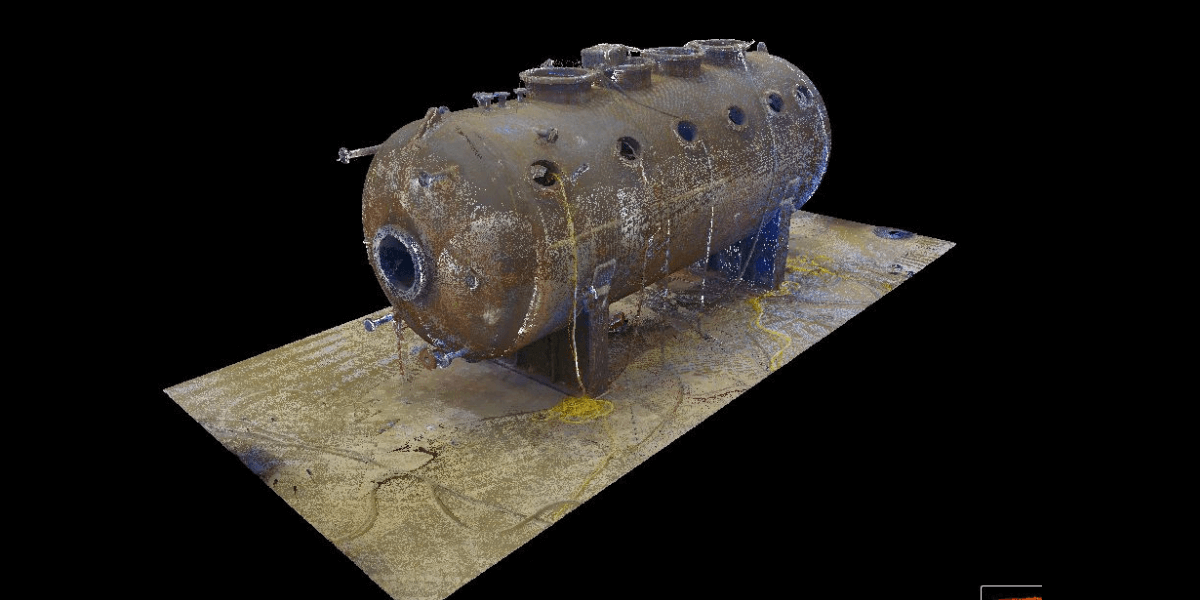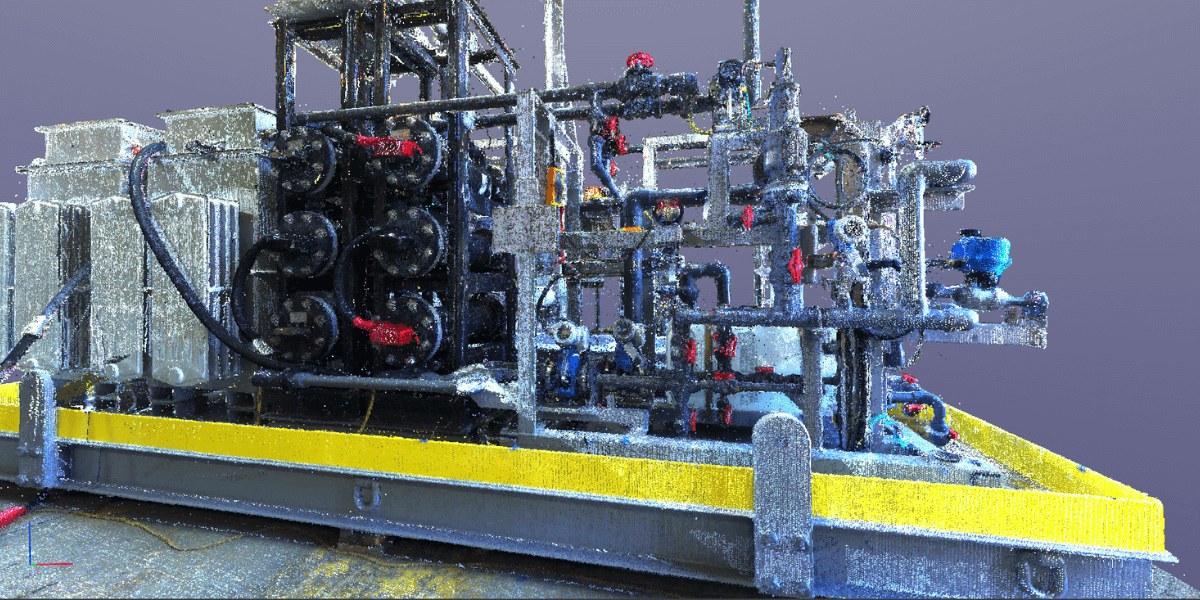Innovations in 3D Laser Scanning: Revolution in Engineering
In the fast-paced world of engineering, innovation is key. Among the most groundbreaking advancements is 3D laser scanning. This technology is...
Table of Contents
Architectural and interior design firms are embracing cutting-edge technologies to elevate their craft. Among these, 3D scanning is a transformative tool, enabling professionals to capture the intricacies of buildings and spaces with unparalleled precision. By producing detailed point cloud data, 3D scanning facilitates precise modeling and seamless integration of new designs into existing structures.
This blog explores how this technology revolutionizes architectural and interior design practices and enhances the accuracy of renovations, restorations, and new projects.
3D scanning technology uses advanced sensors to create highly accurate digital representations of physical spaces. These devices emit laser beams or other sensing methods to capture millions of data points, which are then processed into a digital 3D model called point cloud data. This virtual representation serves as a detailed map of a space, capturing dimensions, textures, and spatial relationships with incredible precision.
For architectural and interior design professionals, this means having access to a comprehensive and accurate digital blueprint of a structure. From historical buildings to modern interiors, 3D scanning eliminates guesswork, streamlining the design process and minimizing errors.
Maintaining structural integrity and historical accuracy is paramount when dealing with older buildings or heritage sites. 3D scanning allows architects to analyze every detail of a structure, from wall alignments to intricate decorative features. The data helps identify structural issues without invasive methods, plan restorations with millimeter-level accuracy, and ensure that new elements blend seamlessly with existing architecture. For instance, a team restoring a century-old cathedral can use 3D scanning to map out its ornate columns and arches, ensuring any repairs or additions respect the original design.
3D scanning is not just for preserving the past—it’s a powerful tool for building the future. Architects can create detailed and accurate building models by integrating point cloud data into CAD software, simulate various design options virtually before construction, and reduce material waste by optimizing measurements and fits. Whether designing a high-rise office building or a minimalist home, 3D scanning enhances precision and reduces the risk of costly adjustments during construction.
3D scanning isn’t just about capturing spaces in three dimensions—it also simplifies the creation of highly accurate 2D-floor plans. These detailed layouts provide a reliable foundation for design, planning, and collaboration, ensuring every project starts with precise measurements.
By converting scan data into scalable 2D-floor plans, architects and designers gain a clear and comprehensive view of a space. This process enhances project efficiency and minimizes costly errors.
Precision & Accuracy: Capture exact dimensions to eliminate measurement discrepancies.
Enhanced Planning: Optimize layouts and space utilization with confidence.
Seamless Integration: Export floor plans into industry-standard software like AutoCAD and Revit.
Cost & Time Savings: Reduce rework and streamline project execution with reliable documentation.
With accurate 2D floor plans derived from 3D scans, design professionals can make informed decisions, improve workflows, and deliver exceptional results.
.png?width=1200&height=800&name=2D%20Floor%20scan%20by%20Blue%20Collar%20Engineering%20(1).png)
Here is a 3D scan we were able to do for one of our clients.
.png?width=1200&height=800&name=2D%20Floor%20Plan%20by%20Blue%20Collar%20Engineering%20(1).png)
This is the final 2D-floor plan we were able to produce from our 3D scans.
Understanding a room’s exact dimensions is critical for interior design. With 3D scanning, designers can map out furniture layouts that maximize space efficiency, ensure custom-built furnishings fit perfectly within the room, and visualize how lighting and textures will interact.
Interior renovations often involve integrating new elements with existing structures. 3D scanning simplifies this by accurately measuring walls, floors, and ceilings in a fraction of the time required with traditional measuring tools. It also highlights potential design constraints, such as uneven surfaces or hidden obstructions, and allows for virtual simulations of design concepts before physical work begins.
3D scanning facilitates better collaboration between designers and clients. By sharing virtual models, clients can visualize proposed changes in a realistic context, provide feedback on designs with a clear understanding of the outcome, and feel confident in the project’s direction, reducing revisions and delays.
.png?width=1200&height=600&name=a%203d%20model%20of%20a%20house%20on%20top%20of%20home%20blue%20prints%20(1).png)
One of the most significant advantages of 3D scanning is its precision. Traditional measuring methods, while effective, often leave room for human error. In contrast, 3D scanning can capture data down to 4 millimeters, ensuring that every detail is accounted for. This level of accuracy is especially valuable for complex renovations, projects with tight tolerances, and large-scale commercial developments.
While the initial investment in 3D scanning equipment or services may seem high, the long-term savings are substantial. By reducing errors, streamlining workflows, and minimizing material waste, 3D scanning helps accelerate project timelines, avoid costly rework during construction, and enhance overall project profitability.
The data generated from 3D scans can be easily integrated into popular design and modeling software, such as AutoCAD, Revit, and SketchUp. This compatibility allows architects and designers to transition seamlessly from scanning to designing, conduct advanced analyses and simulations, and share files easily with collaborators across various platforms.
3D scanning has become indispensable in restoring historic buildings and landmarks. For example, it enables architects to capture intricate plasterwork, detailed moldings, and other architectural elements with incredible precision. This data helps replicate damaged or missing features while preserving the building's original charm and historical integrity.
In the context of office redesigns, 3D scanning aids in optimizing space usage and layout. By analyzing the captured data, designers can identify underutilized areas, plan more efficient floor layouts, and create work environments that enhance productivity and collaboration. These virtual models streamline the decision-making process, ensuring renovations meet both functional and aesthetic goals.
.png?width=1200&height=600&name=A%20modern%20day%20office%20space%20that%20contains%20multiple%20desk%20and%20white%20boards%20with%20computers%20and%20work%20spaces%20(1).png)
Identifying the specific challenges you face in your projects is the first step. Are you working on a historic building? Do you need detailed measurements for custom interiors? Understanding your needs will guide your approach to 3D scanning.
Investing in a 3D scanner or partnering with a reliable scanning service provider is critical. Consider factors like resolution, portability, and software compatibility when choosing. The right tools can make a significant difference in the quality of your data and the efficiency of your workflow.
Ensuring your team is equipped to use 3D scanning technology effectively is essential. This may involve training sessions or hiring specialists to handle the scanning and data processing. A well-trained team can maximize the benefits of 3D scanning and integrate it seamlessly into your design process.
Incorporating 3D scanning in the early stages of your projects ensures you can maximize its benefits. Use the data to inform design decisions, collaborate with clients, and streamline construction. Starting with accurate scans sets a solid foundation for the entire project lifecycle.
3D scanning is more than a technological advancement—it’s a game-changer for architectural and interior design. By providing unparalleled accuracy, enhancing collaboration, and streamlining workflows, this technology empowers design professionals to confidently achieve their creative and practical goals.
At Blue Collar Engineering, we specialize in integrating advanced technologies like 3D scanning into your projects. Whether restoring a historic landmark or designing a cutting-edge commercial space, our expertise ensures your vision becomes a reality. Contact us today to learn more about how we can elevate your design projects.
At Blue Collar Engineering, we specialize in turning concepts into reality. With expertise in 3D scanning, design and drafting, prototyping, engineering, and production management, our team is dedicated to bringing your ideas to life with precision and passion.
From initial concept to final product, we are committed to delivering innovative solutions that meet and exceed your expectations. Whether you're in the food & beverage, oil & gas, or outdoor industry, our multidisciplinary team is equipped to provide turnkey solutions tailored to your needs.

In the fast-paced world of engineering, innovation is key. Among the most groundbreaking advancements is 3D laser scanning. This technology is...

When it comes to engineering, precision and efficiency reign supreme. To achieve these goals, engineers are increasingly more often turning to...

Efficiency and safety are key drivers of success in today’s competitive business environment. An optimal equipment layout is one of the most critical...